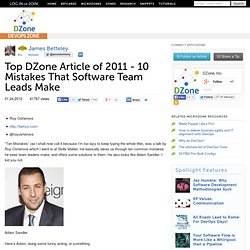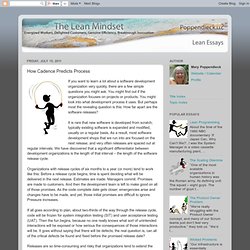

Our domain advantage « mcltbrg. Recently ComputerSweden (largest magazine within the IT sector in Sweden, produced by IDG) had a theme issue about outsourcing and the editor at ComputerSweden claimed that Indian Consultancy companies where better than Swedish consultancy companies. He based his claims on results from a survey that were done by KPMG. According to an article published on (in Swedish – use Google translate) the survey is based on 300 Nordic organizations. 81% of the organizations outsourced to Indian consultancy companies according to the survey. And surprisingly: three of the highest ranked in customer satisfaction was consultancy firms from … India. Are they for real? If they measure outsourcing to India, how could ComputerSweden claim that Indian consultancy firms are better than Swedish (local) consultancy firms?
I’m sorry, but it seems like that the editor at ComputerSweden are not able to read statistics or that they are not presenting all information. Like this: Like Loading... Ruminations From a Tortured Mind. Sous ce titre qui peut paraitre provocateur se trouve un constat plutôt amère, d'autant plus amère que tout cela était prévisible depuis bien des années.

L'Agile est devenu mainstream, on en parle régulièrement dans les journaux de décideurs (c'est bien la preuve de sa reconnaissance non ?) , les développeurs disent le pratiquer au quotidien, les responsables de projet assurent en faire. Alors pourquoi ce pessimisme ? Parce qu'il ne se passe un mois sans en avoir la preuve, par exemple quand quelqu'un se pose en face de moi et me dit : L'agilité, c'est vraiment de la merde !
Et cela m'arrive très souvent (certes ce n'est pas toujours aussi vulgaire). Oh, je vous vois venir : «mais qui es tu pour définir ce qui est de ce qui n'est pas Agile ?». A mes yeux, l'agilité se résume en trois points dont leurs présences sont faciles à juger. La recherche de la valeur J'écoute les besoins.Je conçois et valide les spécifications.Je développe.Je teste.Je livre. Il n'y a pas plus rapide. Lean Machine Square » Le lean est une bulle ? Accueil > Deploiment lean > Le lean est une bulle ?

Aujourd’hui le lean est partout, dans les usines où les choses on commencé, mais également dans le management, dans la santé, dans le management de projets, dans l’engineering, dans l’immobilier, dans la banque, dans la finance, dans l’informatique… Et j’en passe. Cela a toutes les caractéristiques d’une bulle. L’histoire nous apprend que toutes les bulles finissent par exploser… L’histoire nous apprend aussi que l’on a vu pareil comportement concernant le fordisme avec des échecs cuisants sans un domaine comme celui de la construction des maisons. Une autre chose que nous apprend l’histoire : il n’existe pas de panacée. Cela dit, il est possible que le lean tienne plus longtemps que ces ancêtres.
10 Mistakes That Software Team Leads Make. Roy “Ten Mistakes” (as I shall now call it because I’m too lazy to keep typing the whole title), was a talk by Roy Osherove which I went to at Skills Matter.

He basically takes us through ten common mistakes he sees team leaders make, and offers some solutions to them. He also looks like Adam Sandler, I kid you not. Adam Sandler Here’s Adam, doing some funny acting, or something. Roy Osherove Here’s Roy delivering a piece to camera… Adam Roy started us off by talking about a number of questions that team leaders might have. How do I convince my team to do XWhat do I do with the bad apple in my team?
He said that these were all questions that haunted him for years, and in the rest of the talk he goes on to explain how to answer them. So, we then moved on to the first of the Ten Mistakes… #1 Not Recognising Team Maturity This was a good place to start because much of the talk referred back to the “maturity level” of the team. ChaosLearningSelf-Leading Chaos r way, the result is the same – chaos. How Cadence Predicts Process. If you want to learn a lot about a software development organization very quickly, there are a few simple questions you might ask.

You might find out if the organization focuses on projects or products. You might look into what development process it uses. But perhaps most the revealing question is this: How far apart are the software releases? It is rare that new software is developed from scratch; typically existing software is expanded and modified, usually on a regular basis. As a result, most software development shops that we run into are focused on the next release, and very often releases are spaced out at regular intervals. Organizations with release cycles of six months to a year (or more) tend to work like this: Before a release cycle begins, time is spent deciding what will be delivered in the next release. Releases are so time-consuming and risky that organizations tend to extend the length of their release cycle so as not to have to deal with this pain too often.